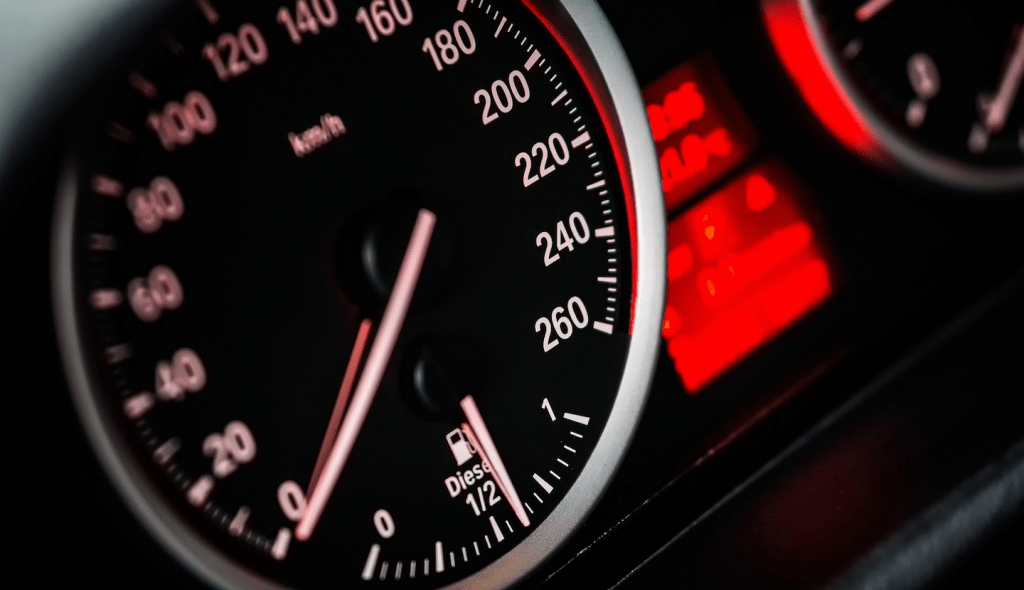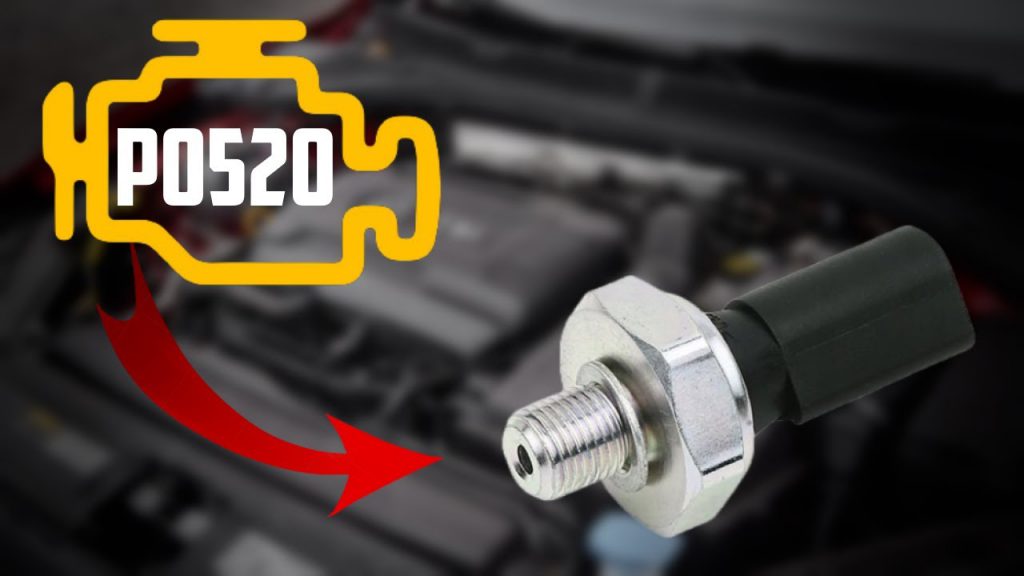P0520 Code – What’s Happened and How to Fix It
You plug an OBD scanner to your car and it pulls the P0520 code. What should you do?
That’s exactly what we’re going to cover on this page. First things first, P0520 is a generic OBD2 code. That means it applies to all brands and models of vehicles that were manufactured after 1996. While it appears more often on GMC, Dodge, Chevrolet, Mercedes, and Cadillac, pretty much any car can throw you this code.
P0520 Code Definition
Code P0520 usually comes with the description “engine oil pressure sensor/switch – circuit malfunction”. That’s a fancy way of saying that the sensor’s circuit is faulty.
What does P0520 really mean? How serious is it?
There are three main things in the above description: oil pressure, oil pressure sensor, and oil pressure sensor circuit. You must understand all three, especially if you’re the do-it-yourself kind of person.
Oil pressure is the amount of force that pushes oil from the oil pan to all the parts that require lubrication. Ideally, this pressure should lie between 25 and 65 psi.
Oil pressure gauge

Any value out of that range should be a cause for concern and may result in code P0521, P0524, and POSSIBLY code P0520.
So, how does your car measure oil pressure? Using an oil pressure sensor (also called sender). This device takes oil pressure readings and sends the values to your car’s powertrain control module (PCM).
Oil pressure sensor
The ECU then displays those readings on the oil pressure gauge. You’ll get an oil pressure warning light if the values are out of the normal range or if the sensor has malfunctioned. If it’s the latter, you may get codes P0521, P0522, P0523 and P0520.
Like every other sensor, the oil pressure sensor has a switch for connecting and disconnecting the power supply. The circuit that connects the sensor, switch, and PCM is called the oil pressure sensor circuit. Now, if there’s a problem somewhere along that circuit, you will get the P0520 code.
This code is almost always caused by an electrical fault in the oil pressure sensor circuit. If it’s not accompanied by any other codes, then the issue is certainly an electrical problem in the circuit. But if it comes with other codes, then there’s a possibility of a faulty sensor/switch or low/high oil pressure.
How serious is code P0520?
Code P0520 is a moderate one if it appears alone. It indicates a problem within the sensor circuit. The entire circuit, including the sensor, is merely a reporting component that doesn’t affect oil pressure in any way. Therefore, you should not experience any drivability issues.
That, however, doesn’t mean that you should ignore the code completely. Be sure to diagnose the issue and fix it before it grows into a bigger problem that may cause drivability concerns. We’ll look at the diagnosis and repair procedure shortly, so read on to find out.
Code P0520 accompanied by other codes
What if the code is accompanied by other codes? In that case, you may have a genuine reason to worry. But it all depends on the nature of those other codes.
If you get a P0520 and a P0521 then the oil pressure is too high; you don’t want that. High oil pressure can lead to the failure of the oil pump and oil filter. Those two conditions usually force the engine to wear rapidly and eventually fail.
If the P0520 is accompanied by P0524, then your car is experiencing low oil pressure; you don’t want that either. Low oil pressure leads to insufficient lubrication, and the various parts will start to clunk, grind, and knock. The crankshaft, together with its rod and bearing, may fail. So if you see a combination of these two codes, you need to diagnose and fix the problem immediately.
There are times when the P0520 code comes with a P0525 and red oil light. If that happens, stop the car as quickly as possible. It usually indicates an imminent engine failure.
The same goes for a P0520 that is accompanied by a P2105. In this case, the engine is failing due to a combination of factors which may include a faulty throttle control and faulty PCM. If this happens, the PCM will automatically shut the engine off to prevent it from damage. It’s possible that the car won’t start until you fix both codes, starting with the P0520.
Symptoms of P0520 code
The most noticeable symptom of code P0520 is the Check Engine Light (CEL) and oil pressure lamp. If you see those two warning lights, there’s every possibility that a scanner will pull this code. Other symptoms that may be present include:
- Oil pressure gauge reading low or high (below 25 or above 65).
- Depending on the nature of the problem, you may hear some clunking and knocking in the engine.
- The engine may misfire if the problem has resulted in low oil pressure.
- The engine may shut down and refuse to start if there’s also a code P2105.
Common causes of code P0520
As mentioned already, the likeliest cause of the P0520 is an electrical fault in the oil pressure sensor circuit. It could be a damaged, disconnected, or shorted wire/connector somewhere along the circuit. If all the wires and connectors are okay, then any one of these can cause the code:
- Excessive resistance in the circuit
- Faulty oil pressure sensor and/or switch
- Use of wrong (unsuitable) oil
- Failed engine components like oil pump or relief valve
- Damaged PCM (extremely unlikely)
Watch more:
How to Diagnose, Fix and Avoid This Code in Future
There are measures that you can take to avoid the P0520 code altogether. We will tell you all about them right after we look at the diagnosis and repair procedures.
Diagnosing and fixing code P0520
The best starting point is your vehicle’s technical service bulletin (TSB). It contains the manufacturer’s recommended procedure for repairing the car.
For example, if your car is one of the Fiat Chrysler brands (Alfa Romeo, Chrysler, Dodge, Fiat, Jeep, Maserati & Ram), you can refer to this document. It gives specific outlines for diagnosing and repairing code P0520.
Every other brand has its procedure. But for the sake of those who can’t find their car’s TSB, here’s a general guide to diagnosing and repairing the P0520 code.
Step 1. Check the oil
The first thing to do whenever you get any engine oil-related code is to check the oil. Make sure it’s the right oil for your car and then verify that it’s filled to the recommended level. Top it up if necessary.
If not, check that the oil has not been diluted by other fluids like coolant or fuel. You may need an oil testing kit for this exercise. If you detect other fluids, change the oil.
Step 2. Read codes
Using an OBD2 scanner, pull all the trouble codes in your car. Examine all the codes and then start by addressing the P0520; assuming it’s still there after step 1. Fixing it may solve several oil pressure and PCM-related codes.
Step 3. Inspect and splice where necessary
Refer to your car’s TSB to locate the oil pressure sensor, its switches, connectors, and wires. Visually inspect the wires and connectors.
Look for any damaged, lost or poorly routed wires. If you spot any, be sure to splice them so that they are properly connected. Use a high-temperature wire when splicing.
Clear codes using your OBD scanner and do a second scan immediately after. If the P0520 code returns, it means that the problem doesn’t lie in the circuit’s connection.
Step 4. Test voltage
You’ll need a digital multimeter for this step. Use it to test the voltage in the ground and power wires of the oil pressure circuit. The results will indicate if the wires are capable of carrying the required voltage.
Test the power feed first. You can do that by placing the multimeter’s black lead connector on the power wire and the red lead on the ground wire. Check the TSB to see the recommended values and then compare them with the reading on the multimeter.
If the voltage reading is off, it means that the sensor’s power relay is faulty. Splice the wire (and replace the switch if necessary) on the power feed of the circuit.
Now, test the sensor’s ground side. This time interchange the multimeter’s connectors so that the red lead touches the power wire and the black one touches the ground wire.
Again, compare the reading with the recommended values in the TSB. If it’s off, that means the ground side of the oil pressure circuit is faulty. Splice the wire (and replace the switch if necessary) on the ground feed of the circuit.
Clear codes and then do another scan to see if code P0520 will appear again. If it does, hop on to the next step.
Step 5. Test resistance
Repeat step 4, except this time tune the multimeter to the ohms setting instead of the voltage setting. Compare the readings with the specified resistance values in the TSB.
If the numbers don’t match, it means that your oil pressure sensor is faulty and needs to be replaced. The same goes if the multimeter reads “OL”; it means that there’s an open in the circuit. Again, you’ll want to replace the sensor.
Use your OBD scanner to clear codes and run another diagnostic scan to see if the P0520 code will show.
Step 6. Check oil pressure
If all the above steps don’t resolve the issue, you will need to manually check the oil pressure. You’ll need a pressure gauge for this.
Why is the step necessary? Because at this point there’s a likelihood that you’re dealing with low oil pressure. The PCM may be failing to pick up on the inadequate pressure, which would also mean that the scanner can’t report it either.
So, connect the pressure gauge to the engine and take the oil pressure reading. Two readings actually; the first is when the engine is idle and the second is at full speed (3,000 RPM). Compare your readings with the recommended values in the TSB.
If you do ascertain that in deed there’s low oil pressure, you can take some steps to fix the issue. First, check that the bearing clearance (look at the back of the engine just opposite the oil pump) has not increased too much.
An increase in that clearance forces oil to flow a lot faster, which in turn lowers pressure. If the clearance is large, replace the current clearance bearings with new ones that are thicker. That will restore oil pressure to normal.
Your second option is to consider replacing your current oil with one that has a higher viscosity. For example, if you’re currently using 5W-20, you can change to 10W-30. That too should increase the pressure.
If the first two options don’t work, go ahead and inspect the oil pump and all its components. Check for damage in the pump drive belt, pump shaft and any other part. Replace whichever one is broken. And if you notice that the pump itself is showing signs of extreme wear, consider replacing it.
Possible mistakes while diagnosing the P0520 code

Most people usually take this trouble code to mean that the oil pressure sensor is faulty and should be replaced. That’s not always the case. In fact, more often than not, the problem usually lies in the circuit’s wiring and connection.
Always start by inspecting all connections to and from the circuit before you embark on replacing any parts. While at it, be sure to check for clogged fuel filter, leaking fuel lines, failed fuel pressure regulators, and failed fuel pumps/injectors.
Any one of those factors can trigger code P0520. So attending to them may help resolve the code.
Furthermore, during diagnosis, keep in mind that engines generally have two or more oil pressure switches. They are often distinguished by color or any other outstanding characteristic. DO NOT interchange them as you may damage the entire engine.
Tips On How to Avoid Getting the P0520 Code
This code relates to the maintenance of the oil pump more than anything else. You’re likely to avoid it if you properly care for your oil tank and the engine in general. Here are the most essential things to do:
- Always use the right oil for your car. You’ll find the recommended viscosity (and possibly brand) in your car’s TSB.
- Make sure that there’s enough oil in the tank – not too much and not too little. There’s a recommended minimum and maximum for each car; be sure to check when filling the oil.
- Inspect the oil pressure sensor circuit regularly. You don’t have to do it daily or weekly, just about three or four times a year. Ensure that there are no loose connections, the wires are not broken and the connectors fit properly.
- Scan for codes as often as you can. This will help you catch the P0520 as soon as it pops up. Early diagnosis and fixing may help save the entire engine.
- Clean your car’s engine. At times this code may be triggered due to a problem in an entirely different part of the engine. In other words, avoiding general engine problems is one way of avoiding code P0520.
To Sum Everything Up…
Diagnostic trouble code P0520 is not a very serious one, just grab the best OBD2 scanner. It indicates a connection problem in the oil pressure sensor circuit. So if you get it, don’t panic. Simply follow the diagnosis and repair procedure above and your car will be fine.
Having said that, it’s important to emphasize that the code could be a symptom of a more serious problem. You’ll know if there’s more to it by observing the oil light on the dash. Generally speaking, a red oil light indicates something serious.
Pull codes to see which ones are listed alongside P0520. That will tell you what you’re dealing with. For example, if you get a P0520 and P2105, then it means that the PCM is failing.
While it’s possible to diagnose and fix code P0520, do not attempt if you’re not confident about your DIY skills. It’s never a bad idea to consult a professional mechanic. Most will charge under $100 for a diagnosis and $75 to $150 per hour to fix the code.














